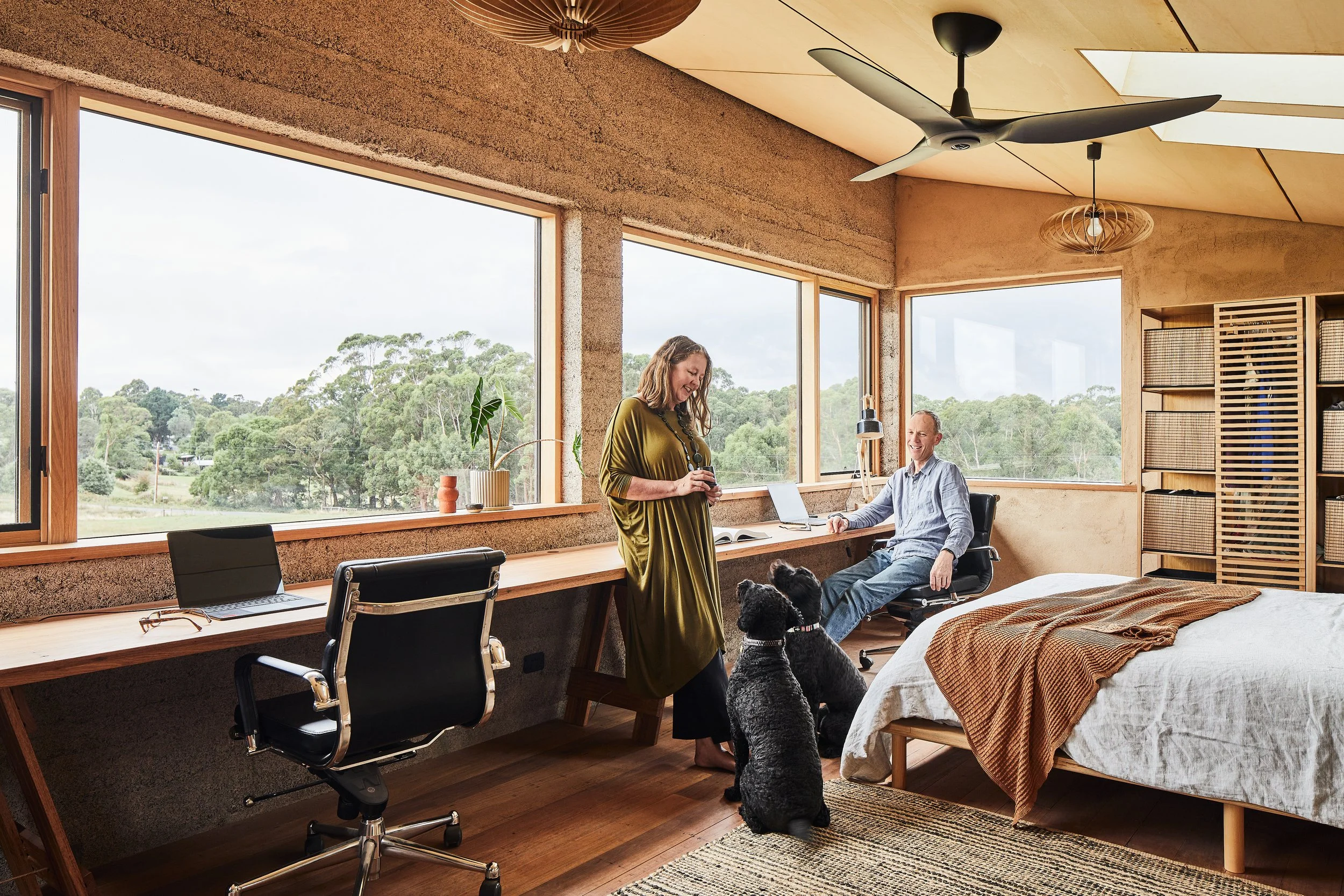What Sustainability Really Means to Us
When people think about sustainable homes, the conversation often stops at energy efficiency — solar panels, insulation, or double glazing. But for us at Altereco, sustainability goes much deeper than that.
We believe that passive solar design principles should be a basic foundation of every home, not an optional upgrade.
That means optimising a home’s orientation, minimising solar gain in summer, and maximising warmth from the sun in winter. It means designing for natural cross-flow ventilation to create comfortable, healthy spaces without relying heavily on mechanical systems.
But true sustainability isn’t just about energy performance — it’s about designing homes that make sense for the people who live in them, for their surroundings, and for the long term.
Here’s how we define sustainability.
1. Size — Build What You Need, No More
We believe the most sustainable home is one that’s just big enough.
Building beyond your needs — an extra room “just in case” — doesn’t just impact your budget. Every extra square metre means more materials, more embodied energy, and higher lifetime costs to heat, cool, clean and maintain.
By designing smarter and more efficiently, we can create homes that feel spacious and functional without unnecessary excess. A smaller, well-designed home is kinder on your wallet and on the planet.
This Passive House certified home illustrates Altereco’s approach to sustainability — combining comfort, energy efficiency, and long-term adaptability
2. Flexibility & Adaptability — One Space, Many Uses
Sustainability also means designing spaces that work harder.
We aim to make every room flexible and multi-purpose — a study that can double as a guest room, or a living space that shifts as family needs change.
This approach reduces the need for more building area, lowers material use, and ensures that your home evolves with you rather than becoming outdated.
Fewer rooms. More function. Less waste.
3. Accessibility — Design for Every Stage of Life
We see accessibility as an integral part of sustainability.
Designing homes that can adapt over time — whether as families grow, needs change, or mobility becomes more limited — reduces the need for costly future renovations or modifications.
Our ethos is simple: design homes that support you through every stage of life. True sustainability considers longevity in both materials and lifestyle.
4. Durability — Designing for the Long Term
At its core, the word sustainability means “the ability to sustain over time.”
That’s why durability is at the heart of our design philosophy.
Every home we design is detailed and constructed to withstand the realities of its environment — from reactive soil and coastal conditions to bushfire risk and a changing climate.
A sustainable home should be built to last, using durable materials and robust detailing that ensure comfort, performance, and longevity for decades to come.
Durable materials and robust construction create homes that withstand climate, soil conditions, and everyday wear — a key part of true sustainability
5. Materials — Choosing What Lasts
The materials we choose have a lasting impact on both performance and the environment.
When specifying materials, we consider:
Transport miles — prioritising local supply where possible
Durability — to ensure long-term performance and minimal maintenance
Low toxicity — for healthier indoor environments
Embodied energy — reducing the carbon cost of production
Recyclability and reuse — closing the loop where possible
We believe good material choices are about balance — using less, using better, and designing for longevity.
Durable materials and robust construction create homes that withstand climate, soil conditions, and everyday wear a key part of true sustainability
Recycled bricks reused at our Gladstone project, Yarraville
6. Affordability — Sustainability Must Be Achievable
Sustainability isn’t just about materials, energy, or design principles — it’s also about making the home achievable for the people who will live in it.
A project that exceeds a client’s financial capacity isn’t truly sustainable. If a home can’t be built, maintained, or adapted over time because of cost, then the design fails before it even starts.
We work closely with our clients to ensure every design decision balances performance, durability, and lifestyle goals with realistic construction budgets. A home that is high-performing and financially feasible is a home that can actually exist, thrive, and be enjoyed for generations.
True sustainability supports the people who live in a home. Natural light, healthy materials, and adaptable spaces create comfort, wellbeing, and long-term enjoyment
A Broader Definition of Sustainability
For us, sustainability is not a feature or a checklist. It’s a mindset — one that shapes every design decision, from the size of a window to the life cycle of a wall system.
A truly sustainable home is one that:
Responds to its site and climate
Serves its occupants without excess
Adapts and endures over time
Is built with care, purpose, and foresight
At Altereco, we design homes that feel good to live in — now, and for generations to come.
Sustainability is a mindset, not a checklist. Every design decision — from orientation to materials — is made with care, purpose, and foresight to create homes that endure and feel good to live in for generations








